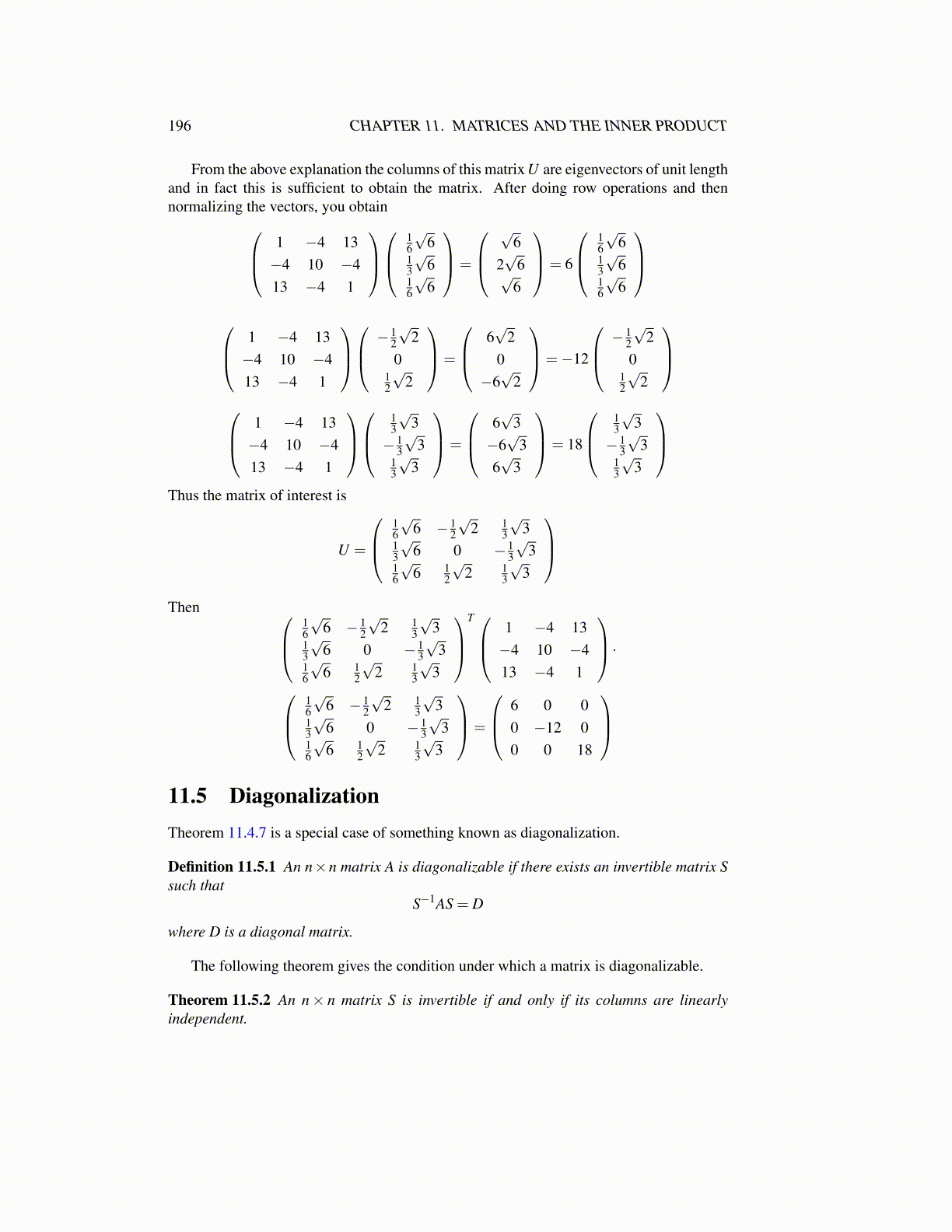
196 CHAPTER 11. MATRICES AND THE INNER PRODUCT
From the above explanation the columns of this matrix U are eigenvectors of unit lengthand in fact this is sufficient to obtain the matrix. After doing row operations and thennormalizing the vectors, you obtain 1 −4 13
−4 10 −413 −4 1
16
√6
13
√6
16
√6
=
√
62√
6√6
= 6
16
√6
13
√6
16
√6
1 −4 13−4 10 −413 −4 1
−
12
√2
012
√2
=
6√
20
−6√
2
=−12
−12
√2
012
√2
1 −4 13−4 10 −413 −4 1
13
√3
− 13
√3
13
√3
=
6√
3−6√
36√
3
= 18
13
√3
− 13
√3
13
√3
Thus the matrix of interest is
U =
16
√6 − 1
2
√2 1
3
√3
13
√6 0 − 1
3
√3
16
√6 1
2
√2 1
3
√3
Then
16
√6 − 1
2
√2 1
3
√3
13
√6 0 − 1
3
√3
16
√6 1
2
√2 1
3
√3
T 1 −4 13
−4 10 −413 −4 1
·
16
√6 − 1
2
√2 1
3
√3
13
√6 0 − 1
3
√3
16
√6 1
2
√2 1
3
√3
=
6 0 00 −12 00 0 18
11.5 DiagonalizationTheorem 11.4.7 is a special case of something known as diagonalization.
Definition 11.5.1 An n×n matrix A is diagonalizable if there exists an invertible matrix Ssuch that
S−1AS = D
where D is a diagonal matrix.
The following theorem gives the condition under which a matrix is diagonalizable.
Theorem 11.5.2 An n× n matrix S is invertible if and only if its columns are linearlyindependent.